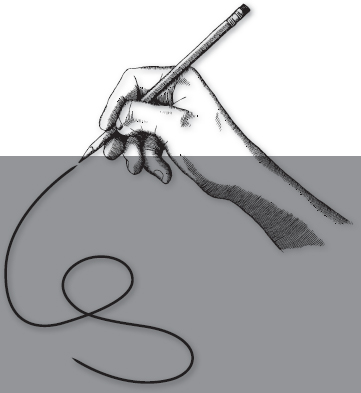
Margins are like the framework of a picture; in this case, the handwriting is the picture. Margins are not consciously made. These spaces show the influence that time and the experience of life has had on the writer.
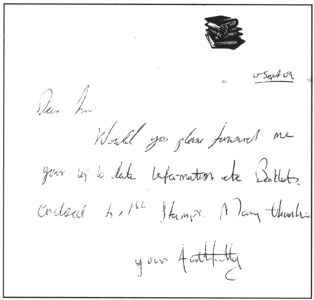
The left-hand margin denotes the writer's past influences and the way he or she uses resources. No left-hand margin suggests that the writer lacks self-confidence and could be clinging to the past. It indicates an insecure individual who still suffers in some way from childhood fears or is badly influenced by his past experiences. People who leave no left-hand margin are afraid of being influenced by others and they can overreact to any kind of criticism or change. A very wide left-hand margin can denote a writer who is generous and reserved; it can also mean that the writer can be thrifty but also wants to be popular.
Sometimes, if the script has been written quickly, the left-hand margin gets progressively larger, with the writing starting farther to the right with each line. People who write like this are impulsive, and this trait can indicate an excitable writer who rushes ahead when starting something new, for example, an enjoyable project, a new relationship, or a vacation. This trait can also indicate that the writer is losing control over his or her finances. Sometimes, however, the writer will become aware of this tendency and try to rectify this trait by starting the next paragraph back on track.
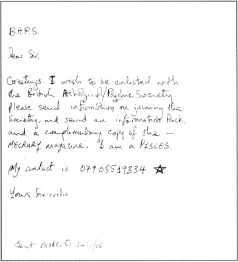
Some irregularity in the right-hand margin is natural; the writer must decide whether, at the end of a line, the next word will actually fit into the remaining space or whether he or she should divide the word in two using a hyphen. Planning ability, or the absence thereof, is reflected here. Those who have had secretarial or office training will probably control the use of their margins as they would when using a typewriter.
Writers who rush to the edge of the paper and leave no margin at all, can be uninhibited and involved with everything and everybody around them. They probably have no fear of the future, meeting it head-on. The person who leaves a wide right margin possibly fears the future, but this trait can also demonstrate artistic abilities, particularly if the right margin is the same size all the way down the page.
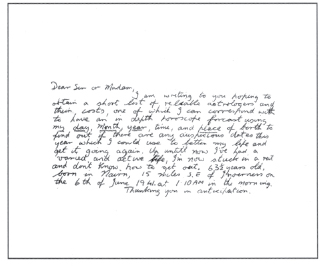
People who present their writing with clear equally spaced margins all around are those who wish to be clearly understood. They may have a commercial background with an aesthetic sense; possibly they are sensitive individuals who like to use artistic license. If the space is very large, the writer can almost be a recluse.
Individuals who leave no margins around their writing can be economical and thrifty to the point of meanness. This trait can also show that the writer has no artistic sense. An individual with this tendency may have a gregarious nature and a need to be loved and wanted; he or she may be a compulsive talker who lacks tact and diplomacy. This writer can cling to past relationships and be unable to let go of past hurts.
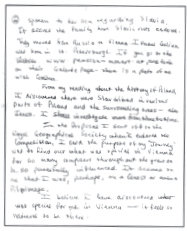
Writers who use narrow or no upper margins can show a dislike of formality and a lack of respect; this characteristic can also indicate ambition. Writers who use a narrow upper margin display little or no planning skills. They can be pessimistic individuals with little or no artistic abilities; they may have a poor educational background. Young people often use narrow upper margins.
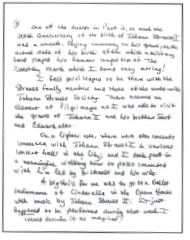
A wide margin left at the top of the page can indicate that the writer has low self-esteem. They may be overly respectful toward their employers and elders. They tend to live in the present and may have little thought for the future.
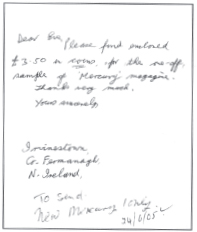
The envelope is divided into four areas: upper, lower, right, left.
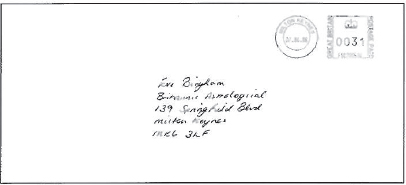
Writers who place the address in the center of the envelope indicate that they are clear thinkers with the ability to organize. This positioning can also indicate that they are orderly, caring, and considerate of others. Underlined words or phrases show that the writer is fussy and easily worried.
An address positioned to the far right of the envelope, sometimes with heavy pressure of the script, can indicate an impulsive person who has aggressive tendencies but who also needs the company of others.

The placing of the address at the top of the envelope denotes that the writer is enterprising and has the need to express his or her opinions. If only the upper half of the envelope is used, the writer can be immature and prone to daydreaming. Sometimes, a young person who forgets that an area for the stamp needs to be left open writes like this.
An address in an extremely low position, whether it is placed centrally or to the left on the envelope, can indicate anxiety and a pessimistic outlook on life. This positioning can also show a materialistic streak.
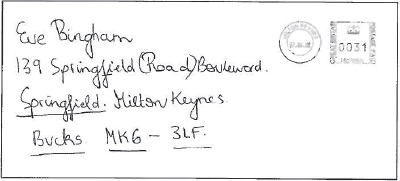
The writer who leaves no space on the envelope shows a need to participate in all aspects of life. Usually, the writing is extremely large, indicating a person who tends to want to be noticed.
The individual who addresses an envelope to the left, centered vertically, can be afraid of life and may also be reserved. This person's interests are more with inanimate objects than with people.
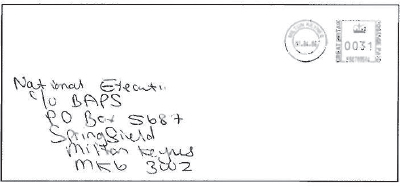
Placement of the address in the bottom left-hand corner of the envelope is unusual, but those who do position it here may have very small writing, showing a lack of confidence and an inner need for security.
An address placed in the upper left-hand corner of the envelope denotes a writer who can be an intellectual but is very much a loner.
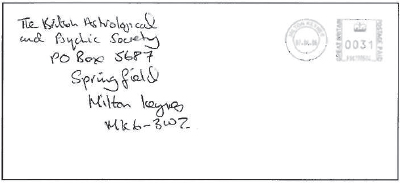
A person who has staggered the address, progressing from the top left to the bottom right, has a cautious and inhibited nature.
An address placed in the center and written extremely small indicates that the writer puts his or her own needs before those of others.